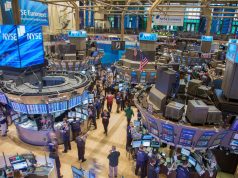The market has been brutal to certain corners of the tech sector this year. While everyone chases the latest AI darling or meme stock, some genuinely solid companies are trading at surprisingly reasonable prices. Sometimes the best opportunities hide in plain sight—especially when quality businesses face temporary headwinds that create buying opportunities for patient investors.
Here are three tech stocks that deserve a closer look, each offering a different angle on the current market environment.
Taiwan Semiconductor Manufacturing (TSM)
Current Price: $246.91 | Market Cap: $1.3 trillion | P/E Ratio: 25x
Taiwan Semiconductor might not grab headlines like Nvidia, but it’s arguably just as important to the AI revolution. When companies need cutting-edge processors manufactured, TSMC handles about 90% of the world’s most advanced chip production. Think of it as the invisible backbone of the entire AI infrastructure buildout.
The numbers tell the story. Revenue jumped 39% last quarter to $31 billion, while earnings surged 61%. Management expects AI revenue to double this year as data centers continue their massive expansion. Nvidia’s CEO recently predicted $3-4 trillion in AI infrastructure spending by decade’s end—and TSMC will manufacture a significant chunk of the processors powering that growth.
What makes this particularly attractive is the valuation. At 25 times earnings, TSMC trades in line with the broader semiconductor industry and the S&P 500. You’re getting the dominant player in advanced chip manufacturing at a reasonable price, right as demand acceleration is just beginning.
The company also offers something rare in growth tech: a dividend yield of 1.11%. It’s not huge, but it provides some income while you wait for the AI buildout to reach full scale.
Alphabet Inc. (GOOG)
Current Price: $234.13 | Market Cap: $2.8 trillion | P/E Ratio: 23x
Google just dodged a major bullet. The recent antitrust ruling allows the company to keep Chrome and Android—two of its most valuable assets. With that regulatory overhang lifted, investors can focus on what Alphabet does best: monetizing the world’s information.
The AI transition is actually going better than many realize. Gemini already has 400 million monthly users, and 2 million advertisers have moved to Google’s AI-powered ad platform—up 50% year-over-year. The company isn’t just defending its search dominance; it’s enhancing it with artificial intelligence.
Google Cloud represents another major growth driver. The division grew 32% last quarter to $13.6 billion in revenue, and deals worth $250 million or more doubled during the quarter. As the third-largest cloud provider with 13% market share, Google has room to gain ground on Amazon and Microsoft in what analysts expect to be a $2 trillion market by 2030.
Here’s the kicker: Alphabet trades at just 26 times earnings, making it cheaper than Microsoft’s 37x multiple. You’re getting similar AI exposure and cloud growth prospects at a substantial discount.
The 0.34% dividend yield won’t move the needle much, but the company has consistently returned cash to shareholders through buybacks. With $110 billion in cash and equivalents, Alphabet has plenty of firepower for both growth investments and shareholder returns.
ON Semiconductor (ON)
Current Price: $48.88 | Market Cap: $20 billion | P/E Ratio: 45x (current), 21x (2025 estimates)
This one requires more patience, but the setup is compelling. ON Semiconductor has been beaten down 24% as automotive and industrial markets went through a rough patch. Electric vehicle investments slowed, manufacturing contracted, and the stock got tossed aside with everything else in cyclical tech.
But here’s what makes it interesting: management believes they’ve hit bottom. Revenue appears to be stabilizing, and automotive sales should grow sequentially in the third quarter. The company’s partnership with Nvidia for next-generation data centers is starting to pay off, with AI data center revenue doubling last quarter.
Yes, the stock trades at 45 times current earnings—that looks expensive on the surface. But here’s the key: those earnings are artificially depressed. The company is operating well below capacity because of weak demand, which crushes margins for a manufacturing business. Wall Street analysts expect earnings to jump 29% in 2026 as demand recovers, which would bring the P/E ratio down to about 21 times next year’s earnings. You’re essentially paying today’s depressed multiple for tomorrow’s normalized profits. The company generates impressive free cash flow—about 25% of revenue—meaning it’s trading at roughly 13 times free cash flow in what should be a trough year.
The long-term story remains intact. Electric vehicles, smart industrial facilities, and AI data centers all need ON Semiconductor’s power management and sensing solutions. The energy transition isn’t going away; it’s just taking longer than initially expected.
Management has used this downturn to streamline operations, exiting lower-margin businesses to focus on higher-value opportunities. When demand returns—and it will—the company should emerge stronger with better margins.








